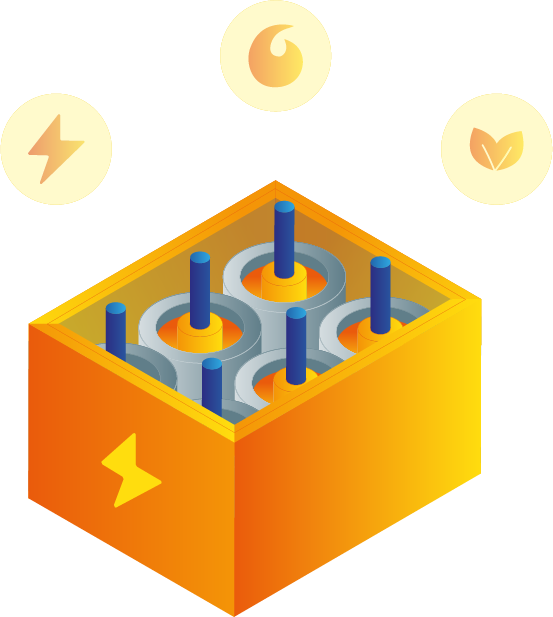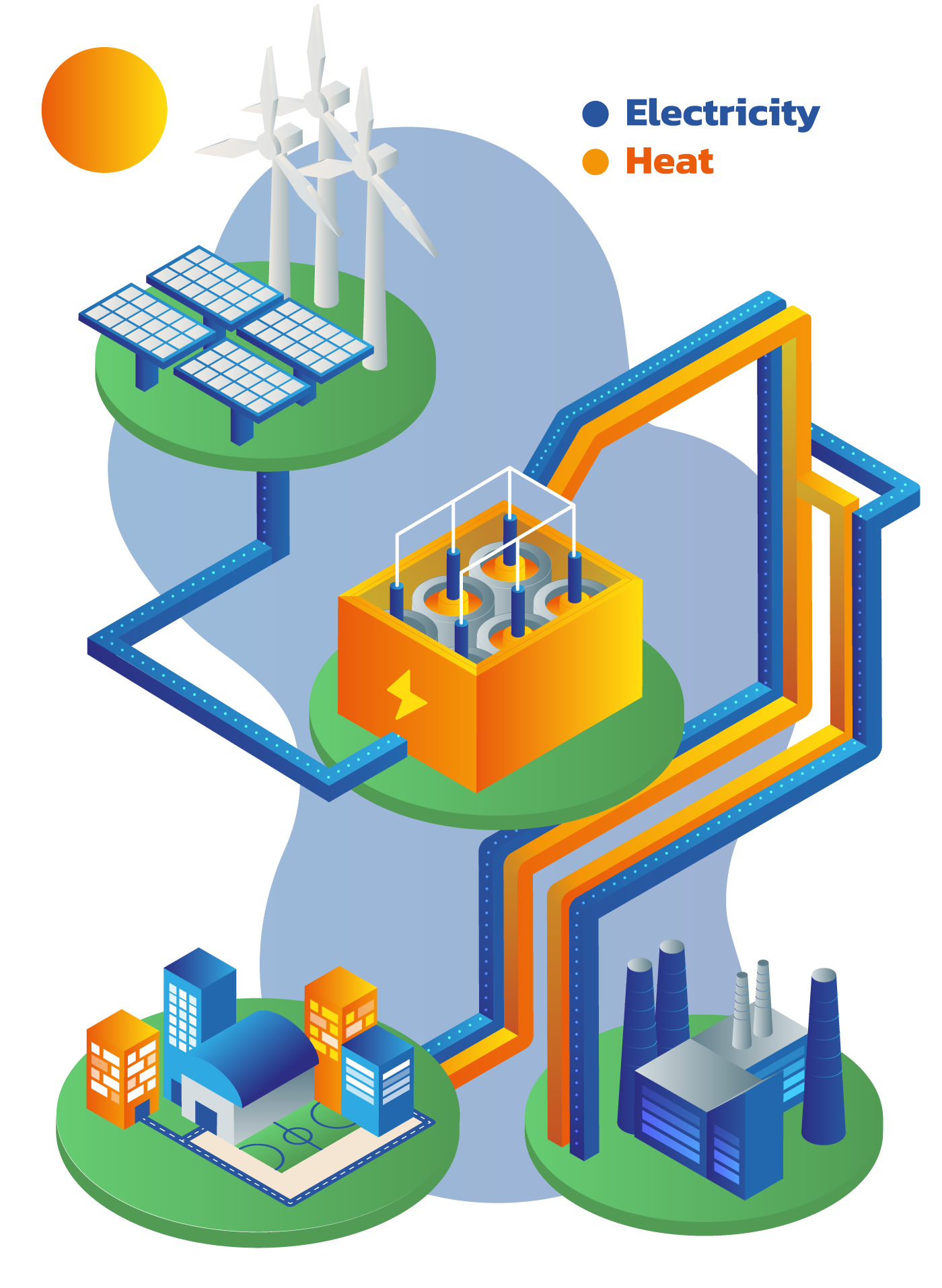Cheap, clean energy available at all times
Developing tools to ensure network resilience
Our technology stores electricity by melting ferrosilicon alloys at temperatures over 1000ºC. This heat can be stored for extended periods of time and recovered back to electricity using thermophotovoltaics. This innovative approach delivers both heat and electricity on demand, solving the current threats of uncertain supply and enabling a clean, sustainable future.

Features and advantages
Our technology has proven to be:
Simple
No need for complex heat exchangers and transfer fluids
Affordable
Made of abundant, low-cost materials
Safe
Low-pressure storage and use of non-hazardous materials
Compact
High energy density enabling smaller sizes
Silent
Solid state heat engine with no moving parts
Scalable
With modules that can be configured to meet any load
Flexible
The end-user can optimise the energy flux
Recyclable
Built with non-toxic, reusable materials
The latent heat thermophotovoltaic battery design
Surpassing all current technologies both in performance and reduced costs
Our system consists of a thermophotovoltaic (TPV) generator connected to a tank filled with a combination of metals, and an electric furnace. Using surplus energy from renewable sources the furnace generates heat melting the metals at a temperature of around 1000ºC. Remaining in this state for long periods of time (over several days) these now incandescent metals emit large amounts of photons. This thermal radiation holds the key to converting the heat back into electricity. Operating like a solar cell with a twist the TPV generator can be inserted, converting thermal radiation into electricity, or retracted to stop the discharge, allowing the system to operate only when needed.
Heat as a by-product
Satisfying heating needs both at a residential and industrial level
To operate at optimal functional temperature (lower than 80ºC) our system’s TPV generators must be cooled. During this process, low-temperature heat is generated with a variety of potential uses. Often underappreciated in the energy landscape, thermal heat comprises more than half of the global energy demand – two to three times more than electrical needs – and since most of it comes from the burning of natural gas, it contributes heavily to global CO2 emissions. Our battery output temperature could tackle approximately 64 % of all the EU heating needs: corresponding to space heating, domestic hot water, and to low-temperature industrial processes.
